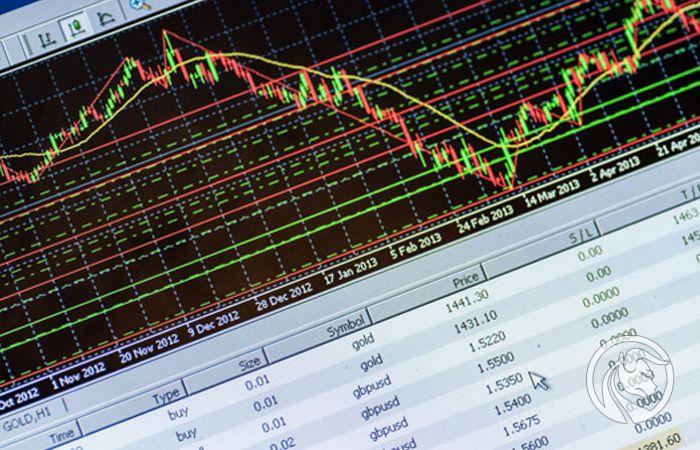Differences between the demo account and the real one
Almost every person begins their adventure in the currency market from setting up a demo account and playing on it. At first, it's fun and / or learning. However, with the progress and the growing baggage of experience and knowledge, it is time to switch to a real account. There we already deal with real transactions. What does this mean for us? The question is: demo account and real? What are the differences between them? This article will focus only on technical discrepancies. We leave the psychological aspects aside for now.
Virtual money
The first thought that comes to mind when it comes to the differences between demo and real is that on the demo we are dealing with virtual money. Technically, it doesn't matter, because everything is calculated the same way, which is pips value, Margin Required, Profit / Loss and other things work similarly in a real account. However, in practice, this means that our transactions are not carried out on the market. Not only that, they are not passed on anywhere - colloquially speaking they are going up. Thus, it is difficult to treat requotes or here price slippagethat can and actually do occur. Unfortunately, it cannot be simulated since our order does not have to have the other side of the transaction. On the demo account, we can open 10 positions of 50 lots at a time and all of them will come beautifully. In real life, even in the most liquid pairs, this can be a slight problem.
Execution of orders
The second important difference is the speed of the execution. Typically, brokers separate servers for real and demo accounts. Mainly to be able to test various solutions first on the latter, before introducing them to real accounts. These are undoubtedly more priority for them, and also not to force them too much. Demo servers are often much more loaded due to more bills and transactions. After all, demos are used for testing, so many traders put their machines there, which can contain 100 or more trades a day. On the other hand, inactive demo accounts are constantly removed by brokers, but they cannot do the same with real accounts.
READ NECESSARY: Execution of orders is [key] important
Ultimately, it all comes down to the conclusion that the load on the servers can vary. It is impossible to directly determine where everything will run stably and faster. Hermetic conditions of playing on virtual funds should be more conducive to this. On the other hand, real servers are under constant supervision and the watchful eye of brokers.
Discrepancies in quotes, spreads, swaps
Among other things, in connection with the previous paragraph of the article, we can also observe differences in quotations. Differences in datafeed, the degree of its filtering (if the broker uses them), different servers and the degree of their load - all this means that we can have different prices on two types of accounts at the same time and spreads. Usually the discrepancies are small and only short-lived, although it is worth knowing that they may (but do not have to) appear. The same applies to the rates of swap points - here also other values may be charged on virtual funds than on real ones. This is due to the fact that the broker updates swaps manually, and demo accounts are not given priority, so the rates there may be out of date due to oversight.
On the whole brokerzy they do not manipulate these values in favor of the dem, so that it would be an incentive to set up a real account in the future (I mean the situation where spreads and swaps are definitely better on the demo than on the real), so there is no need to see conspiracy theories here.
Demo account and real? After all, the demo is unequal ...
It happens that brokers do not pay much attention to the configuration of demo accounts or they simply do not see something unconsciously. Of course, this is not common, but it does happen and it is worth remembering. An example of such oversight may be a situation where our virtual Stop Loss order is executed in a price gap. At a price that did not occur. In a real account, it will be closed at the first market price. It may also be the case that on the demo, the maximum transaction volume will be set for all instruments to 100 lots, and in fact, we will be able to conclude a single transaction for a maximum of 50 lots. There may be more similar misconfigured options and only with the comparative method we will have time to find out about it ...
READ ALSO: Types of Forex Brokers: ECN, STP, MM
As a rule, such cases are only oversights, not the bad will of brokers, so we can forgive them and, if necessary, pay attention to such nuancesif we observe them, and they should correct them.
So why do we need a demo?
Since there can be so many differences between real and demo accounts, why play with a virtual cash register at all? There are at least several important reasons.
- In the demo account we can get acquainted with the transaction platform. There is no fear that something is going wrong, and consequently we will lose the deposit or part of it. And even if it will be virtual so there is nothing to worry about.
- We can check how the mechanisms in the Forex market, such as lever financial, changes in quotes, Margin Call or Stop-Out and how pending orders are executed. Additionally, the same financial instruments are usually available on the demo as on the real world. By the way, we can check what the broker can offer us and learn about the specificity of these instruments.
- Spreads. Currently, the market is dominated by STP and ECN, i.e. those who are only transaction brokers and transfer our orders to the market. As a result, they offer purely market spreads, and their spread is based on the current liquidity in the market. Due to the fact that Forex is decentralized, there is no concept of "one right price". The same applies to spreads that change all the time and depend on the liquidity of the financial instrument at any given time. On demo accounts, we can easily observe how these values are shaped on currency pairs and at the times in which we plan to trade.
- The demo is an experimental training ground. There is full freedom as to the style of the game, deposit and other technically unlimited things. Thanks to this, new ideas for transaction systems can be tested on virtual funds. Check new settings of indicators or automats, conduct the so-called forward tests our strategies. Just have fun / learn by trading Forex using fake money.
Let us remember!
If we want to see what the real trade with a given broker looks like in practice, we can only fully check it on a real account. No demo will show us 100% of this. Fortunately, when setting up an investment account, we do not sign the pact with blood. So if, ultimately, something does not suit us, we can withdraw the funds and say goodbye to this company.






















![Forex Club – Tax 9 – Settle tax on a foreign broker [Download the Application] Forex Club - Tax 9](https://forexclub.pl/wp-content/uploads/2024/02/Forex-Club-Podatek-9-184x120.jpg?v=1709046278)
![Trading View platform – solutions tailored to the needs of traders [Review] trading view review](https://forexclub.pl/wp-content/uploads/2024/03/trading-view-recenzja-184x120.jpg?v=1709558918)
![How to connect your FP Markets account to the Trading View platform [Guide] fp markets trading view](https://forexclub.pl/wp-content/uploads/2024/02/fp-markets-trading-view-184x120.jpg?v=1708677291)
![How to invest in ChatGPT and AI? Stocks and ETFs [Guide] how to invest in chatgpt and artificial intelligence](https://forexclub.pl/wp-content/uploads/2023/02/jak-inwestowac-w-chatgpt-i-sztuczna-inteligencje-184x120.jpg?v=1676364263)



![Izabela Górecka – “Success on the market depends not only on knowledge, but also on emotional stability” [Interview] Izabela Górecka - interview](https://forexclub.pl/wp-content/uploads/2024/04/Izabela-Gorecka-wywiad-184x120.jpg?v=1713870578)
![WeWork – the anatomy of the collapse of a company valued at $47 billion [WeWork, part II] wework bankruptcy story](https://forexclub.pl/wp-content/uploads/2024/04/wework-bankructwo-historia-184x120.jpg?v=1711729561)
![Adam Neumann – the man who screwed up Softbank [WeWork, part AND] adam neumann wework](https://forexclub.pl/wp-content/uploads/2024/04/adam-neumann-wework-184x120.jpg?v=1711728724)





![The most common mistakes of a beginner trader - Mr Yogi [VIDEO] Scalping - The most common mistakes of a beginner trader - VIDEO](https://forexclub.pl/wp-content/uploads/2024/03/Scalping-Najczestsze-bledy-poczatkujacego-tradera-VIDEO-184x120.jpg?v=1711601376)
![Learning patience: No position is also a position - Mr Yogi [VIDEO] Scalping - Learning patience - No position is also a position - VIDEO](https://forexclub.pl/wp-content/uploads/2024/03/Scalping-Nauka-cierpliwosci-Brak-pozycji-to-tez-pozycja-VIDEO-184x120.jpg?v=1710999249)
![When to exit a position and how to minimize losses - Mr Yogi [VIDEO] Scalping - When to exit a position and how to minimize losses - VIDEO](https://forexclub.pl/wp-content/uploads/2024/03/Scalping-Kiedy-wyjsc-z-pozycji-i-jak-minimalizowac-straty-VIDEO-184x120.jpg?v=1710336731)





![Dukascopy will reduce your commission by -50%. Permanently! [Promotion for new] dukascopy promotion commissions](https://forexclub.pl/wp-content/uploads/2021/09/dukascopy-prowizje-promocja-300x200.jpg?v=1632142545)












